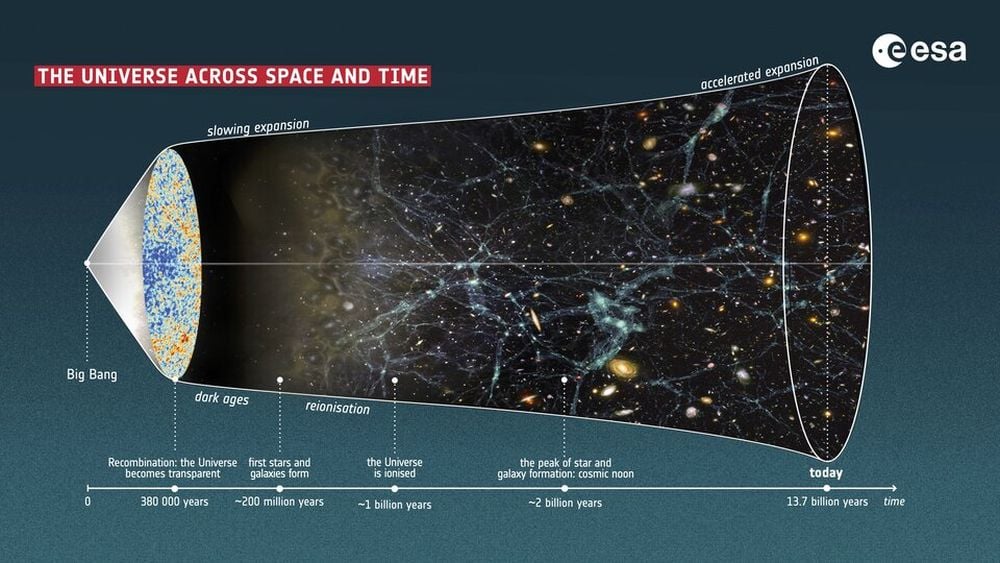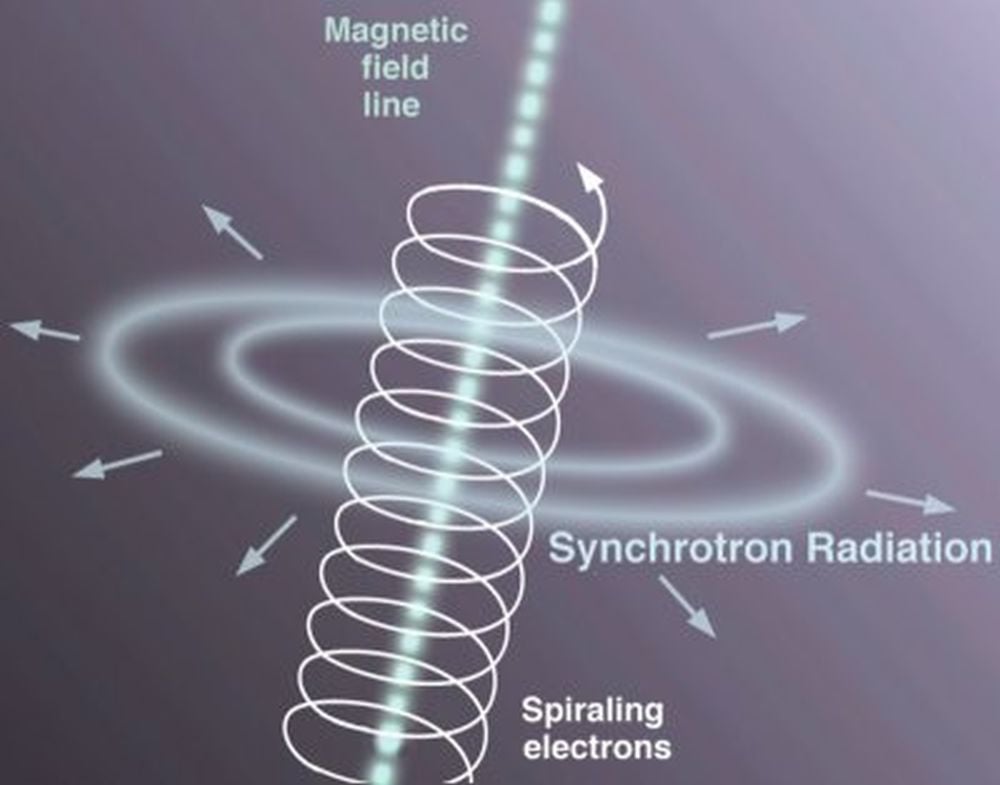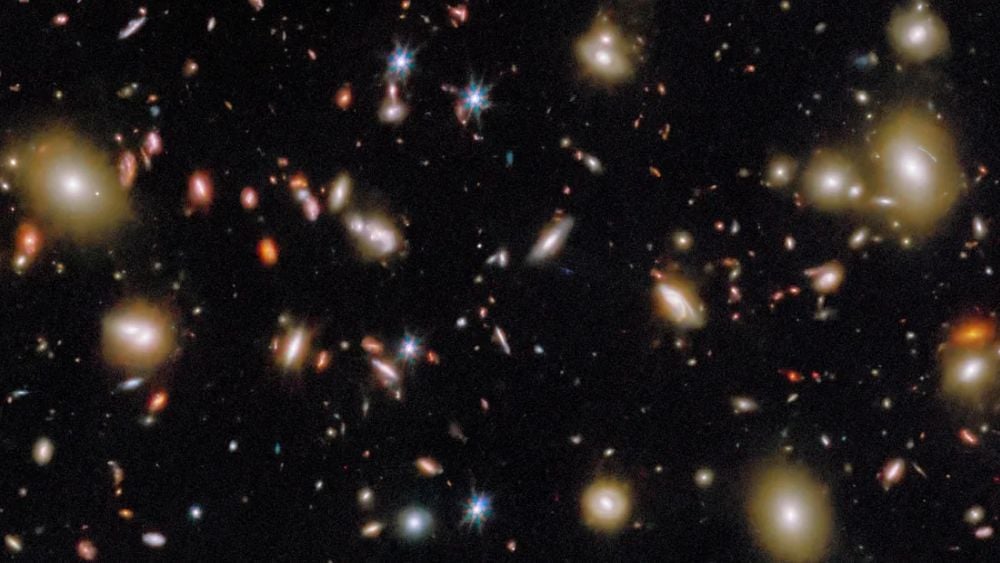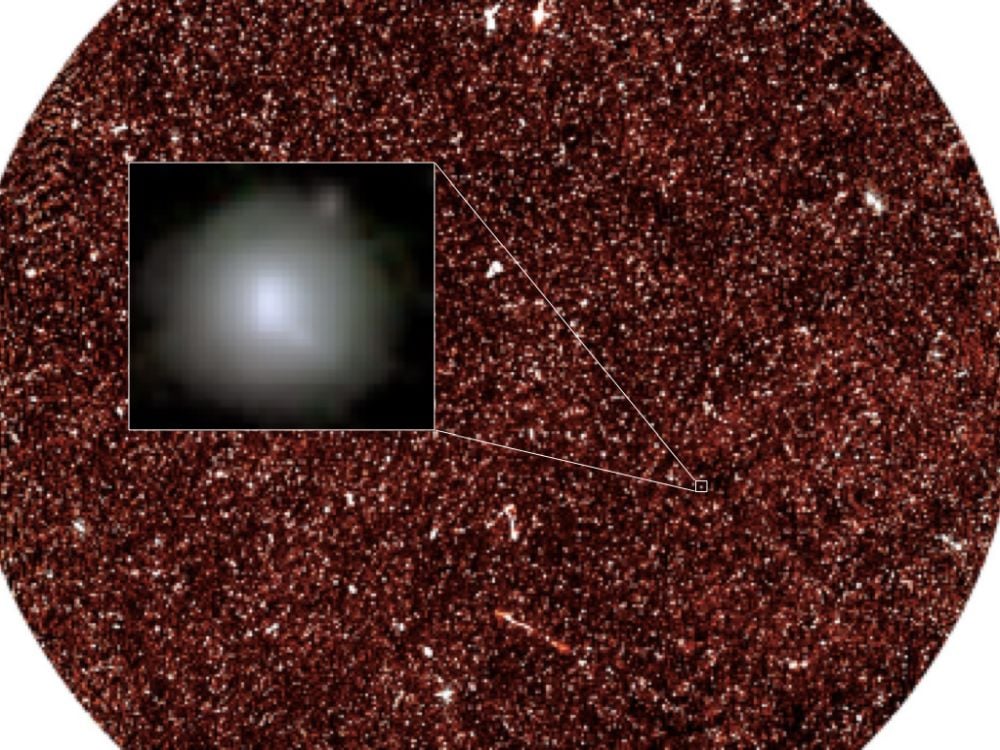Answers to some of cosmology’s most pressing questions are obscured by simple dust. It concerns the Cosmic Noon, a period of time that began around two billion years after the Big Bang, when nearly all galaxies experienced a burst of growth and rapid star formation. Galaxies formed stars at rates 10 to 100 times higher than today, and they became more massive through mergers with other galaxies. Dark matter haloes grew rapidly during this time as well. Astronomers want to understand how galaxies grow and evolve, and the Cosmic Noon and its high star formation rate (SFR) and rapid growth is a critical stage in galactic evolution.
The great thing about radio waves is that they’re relatively unimpeded by dust. Their longer wavelengths allows them to pass through dust that blocks optical light. That means they can be used to probe the dust-obscured Cosmic Noon, which is partially blocked to observations in optical light.
New research analyzed the radio spectral energy distributions (SEDs) of 160 galaxies during the Cosmic Noon. It used data from MeerKAT, the Very Large Array, and the Giant Metrewave Radio Telescope to separate radio waves into their separate components and to trace the properties of the galaxies over time.
The research is published in The Astrophysical Journal in an article titled “The Radio Spectral Energy Distribution and Star Formation Calibration in MIGHTEE-COSMOS Highly Star-forming Galaxies at 1.5 ” The lead author is Fatemeh Tabatabaei, an Astronomy Professor at the Institute for Research in Fundamental Sciences (IPM) in Tehran, Iran.
“Studying the radio spectral energy distribution (SED) of distant galaxies is essential for understanding their assembly and evolution over cosmic time,” the researchers write in their article.
Everything we know about galaxies stems from our observations of the light they emit, including radio waves and optical/visible light. Visible light observations show that following the Cosmic Noon, galaxies began quenching, meaning their SFR was throttled down. But our understanding of a galaxy’s SFR is biased by our visible light observations, which are impeded by interstellar dust. Since radio waves pass through dust, radio observations can complement visible light observations by revealing unseen aspects of galaxies at the Cosmic Noon.
 This timeline of the Universe show different eras of its history. The Cosmic Noon was a time of peak star formation and galaxy growth. Image Credit: ESA. CC BY-SA 3.0 IGO
This timeline of the Universe show different eras of its history. The Cosmic Noon was a time of peak star formation and galaxy growth. Image Credit: ESA. CC BY-SA 3.0 IGO
“This motivated us to perform deep radio observations of several fields on the sky with the South African MeerKAT radio telescope, situated 90 km outside the small Northern Cape town of Carnarvon, which is a precursor to the SKA observatory,” said co-author Professor Russ Taylor in a press release. Taylor is also the co-principal investigator of the MeerKAT International GHz Tiered Extragalactic Exploration survey (MIGHTEE). The MIGHTEE survey provides simultaneous radio continuum, spectral line and polarization information to study the SFR in galaxies over cosmic time. It also probes the magnetic fields of galaxies over cosmic time.
“Our previous multi-frequency radio observations of nearby galaxies showed that radio signals from 1 to 10 GHz provide a robust tool to measure the star formation rate,” said lead author Tabatabaei. “The MIGHTEE survey, combined with other radio surveys, allowed us to extend our studies to 160 early galaxies in cosmic noon and beyond.”
“Our detailed analysis shows that the radio spectrum of these galaxies evolves with star formation rate which can have important consequence in our understanding of early star-forming galaxies,” said co-author and IPM researcher Dr. Maryam Khademi.
One of the things they measured is the synchrotron spectral index. It’s one of the crucial parameters in understanding cosmic rays and galaxies’ magnetic fields. Synchrotron radiation is emitted by cosmic rays (high energy electrons) as they spiral along magnetic fields. They found that the synchrotron spectral index flattens with increasing redshift and star formation rate. Flattening in this case means that more high-energy electrons relative to lower energy ones were emitted. This finding indicates that cosmic ray electrons were more energetic in the early universe, likely driven by the higher star formation activity.
 Synchrotron radiation is emitted by electrons that are spiraling along magnetic fields. They’re being accelerated enought that relativistic effects become important. Image Credit: Jon Lomberg/Gemini Observatory.
Synchrotron radiation is emitted by electrons that are spiraling along magnetic fields. They’re being accelerated enought that relativistic effects become important. Image Credit: Jon Lomberg/Gemini Observatory.
But cosmic rays are known to lose energy rapidly the more time they spend in magnetic fields because of the synchrotron radiation they emit while in the fields. The spectra of these early galaxies shows that these cosmic rays have gained more energy in galaxies with higher star formation rate where the magnetic fields are also stronger. What’s behind the discrepancy?
“This can occur if magnetic fields are highly tangled and turbulent in these systems,” said Professor Tabatabaei. “Turbulent magnetic fields help cosmic rays accelerate to higher energies. These particles then scatter off and decouple from the field.”
If that’s true, then Cosmic Noon galaxies should be embedded in clouds or haloes of high-energy cosmic rays. The researchers also found that the infrared–radio correlation (IRRC), an indirect way of measuring the SED of distant galaxies, remains constant with redshift, despite the same SED evolving in radio waves. The haloes of high-energy cosmic rays can also explain that.
 This JWST image is a deep-field view of the Universe that showcases a portion of the COSMOS-Web field acquired with the powerful space telescope. It contains a wide variety of galaxies. The reddest, dot-like galaxies are some of the most distant and earliest galaxies ever seen. Image Credit: ESA/Webb, NASA & CSA, G. Gozaliasl, A. Koekemoer, M. Franco, and the COSMOS-Web team
This JWST image is a deep-field view of the Universe that showcases a portion of the COSMOS-Web field acquired with the powerful space telescope. It contains a wide variety of galaxies. The reddest, dot-like galaxies are some of the most distant and earliest galaxies ever seen. Image Credit: ESA/Webb, NASA & CSA, G. Gozaliasl, A. Koekemoer, M. Franco, and the COSMOS-Web team
The research also shows that radio observations are effective tracers of star formation at high redshifts. This is an important finding, since powerful radio observatories like the Square Kilometer Array will be operational soon. It will map one billion galaxies in radio, and will study galaxy formation and evolution in the ancient Universe, among other topics.
“The work presented in this paper will benefit from the upcoming deep and multifrequency SKA surveys, which will help to perform a more robust SED analysis in more complete samples,” the researchers write in their paper’s conclusion.
